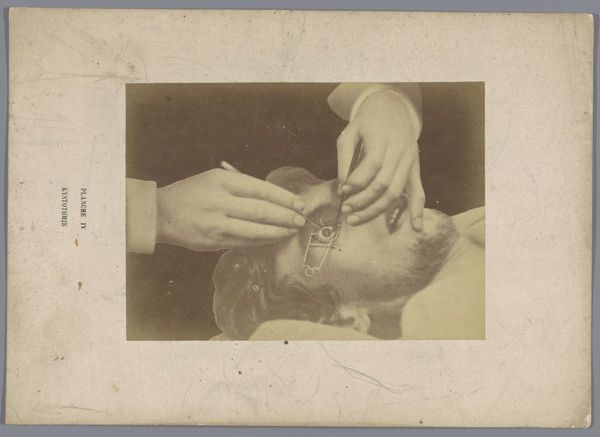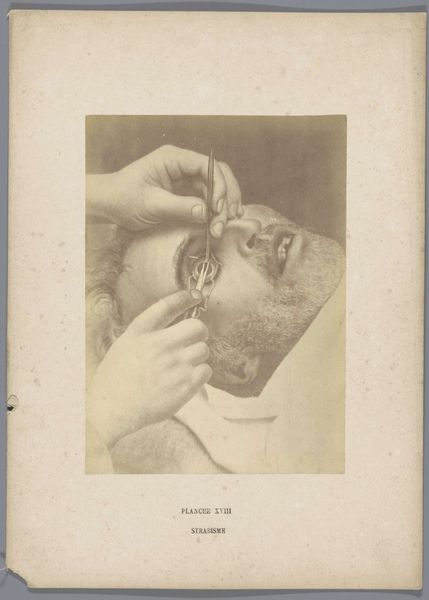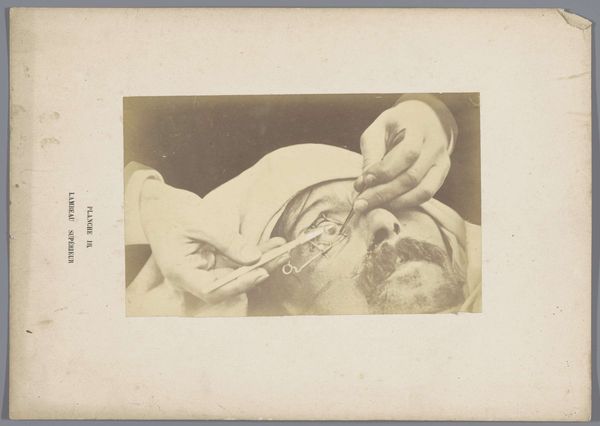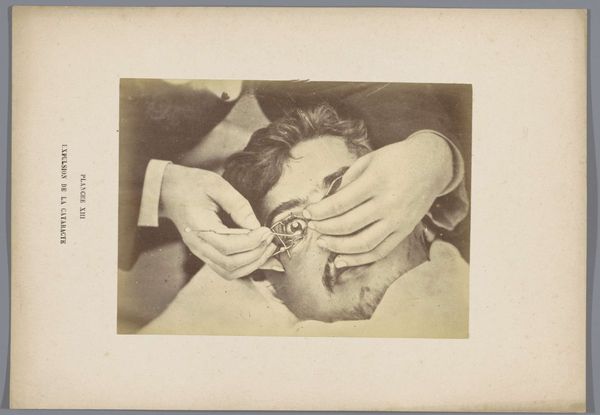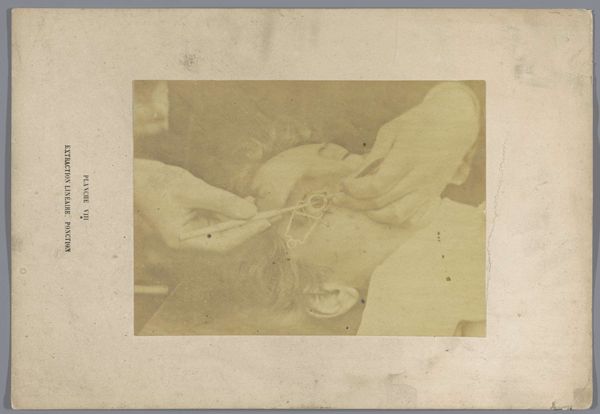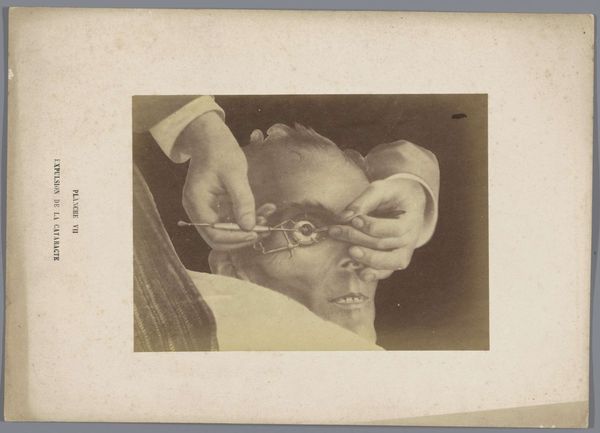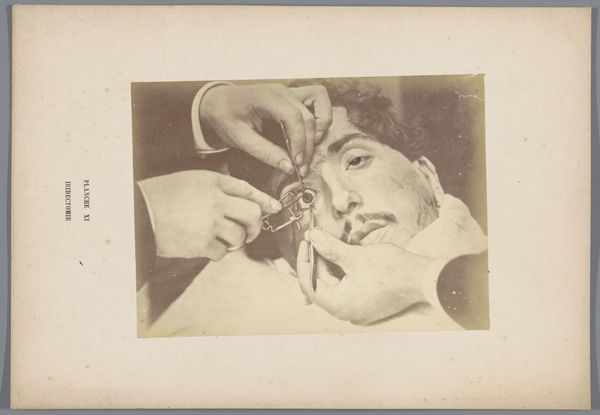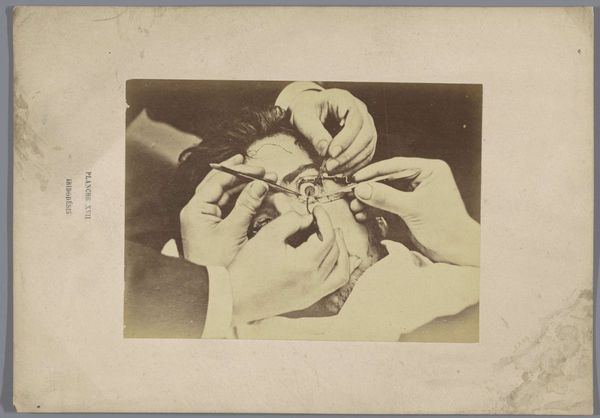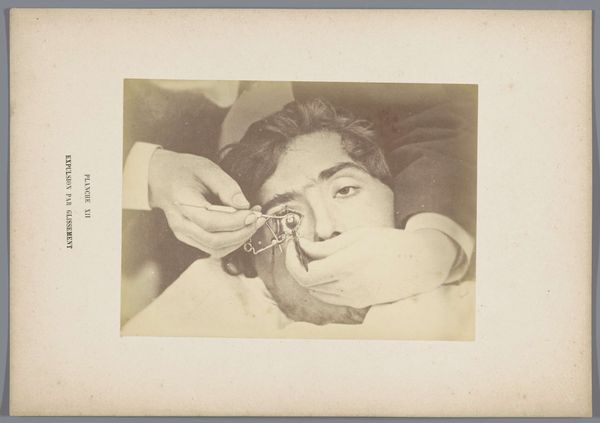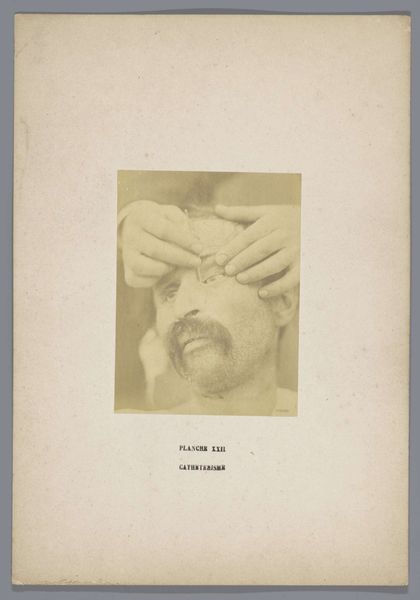
photography, gelatin-silver-print
#
portrait
#
toned paper
#
photography
#
coloured pencil
#
gelatin-silver-print
#
watercolour illustration
#
history-painting
#
academic-art
#
realism
Dimensions: height 125 mm, width 174 mm
Copyright: Rijks Museum: Open Domain
Editor: This gelatin-silver print from before 1873, titled *Eye Surgery for Strabismus* by A. de Montméja, is intensely unsettling. The close-up view and the instruments near the eye create a feeling of vulnerability. How do you interpret this work? Curator: What strikes me most is the clinical gaze inherent in this photograph. It is not just a record of a medical procedure, but a reflection of the power dynamics at play. The patient's vulnerability is amplified by the photographer's choice of perspective. Consider how medical illustrations like this one historically perpetuated certain societal norms. What kind of access would the sitter have to consenting about their body being represented in this manner? Editor: That's a perspective I hadn't considered. It makes me think about the history of medicine and how it intersects with social issues, even in something as seemingly straightforward as a surgical photograph. Were these images used for teaching? Curator: Exactly! They were tools. This image might be about objectification and the ways in which the medical establishment can sometimes strip individuals of their agency. Think about Michel Foucault’s writings on the medical gaze and the construction of the “patient” as an object of study. How might the understanding of that framework help us analyse what the sitter here must have experienced? Editor: So, looking beyond the surface, we can see it's a snapshot that holds uncomfortable truths about medical practices and ethics, viewed through a very subjective lens, that maybe aren't immediately visible to an untrained eye. I will have to read Foucault's thoughts about the gaze... Curator: Indeed, analyzing the layers of power within its historical context allows us to question the neutrality of such images and invites discussions about ethical representation. Hopefully you have a new point of view when thinking of similar photographs and depictions now.
Comments
No comments
Be the first to comment and join the conversation on the ultimate creative platform.
